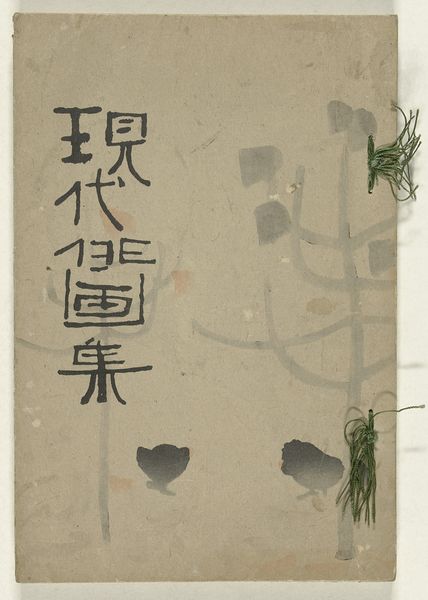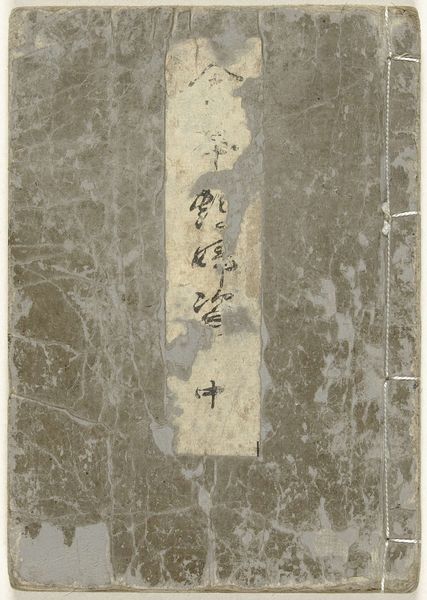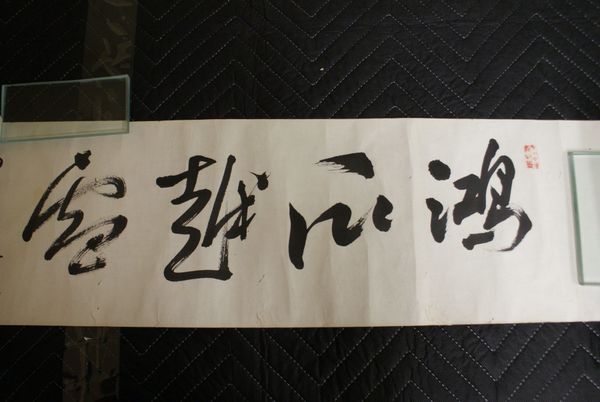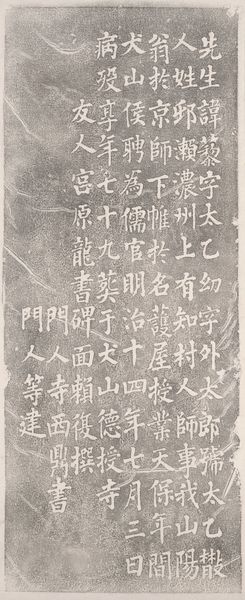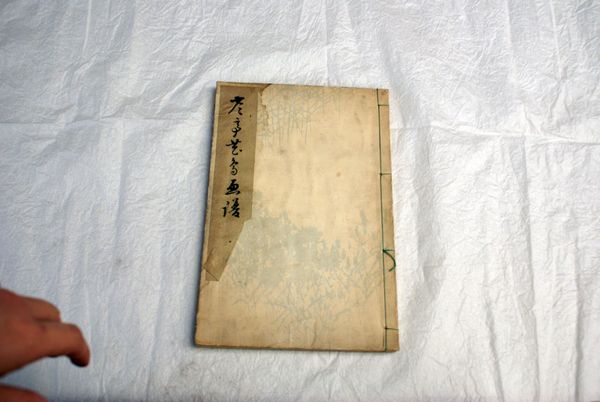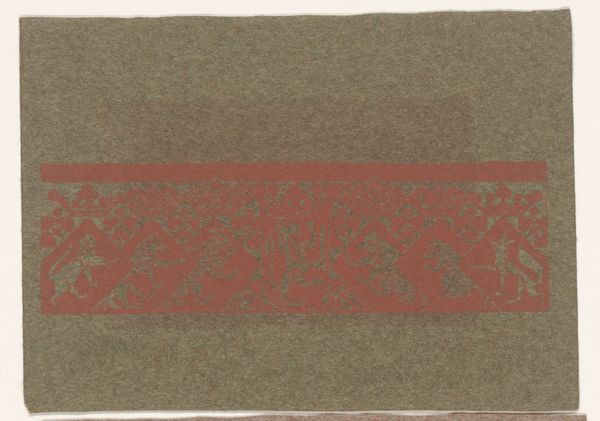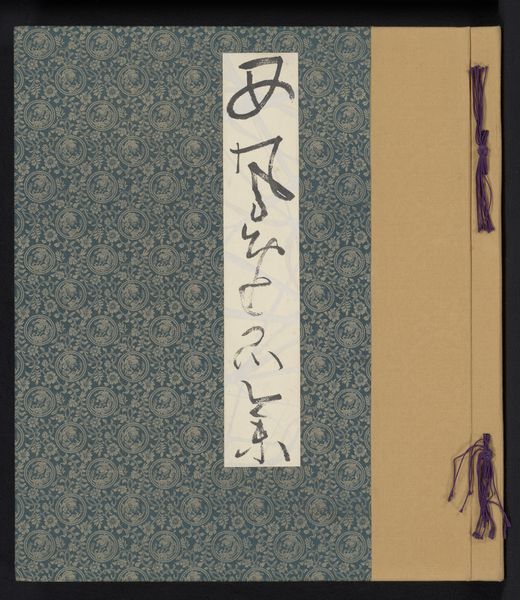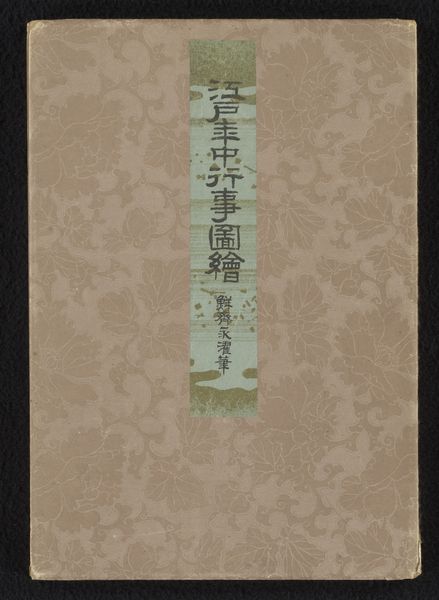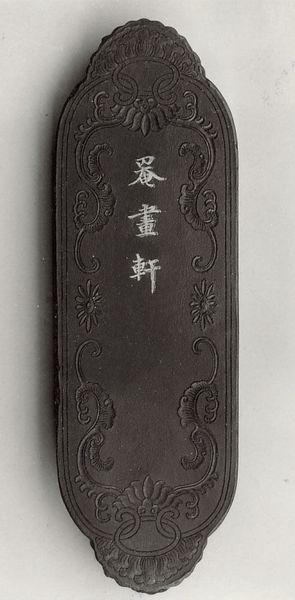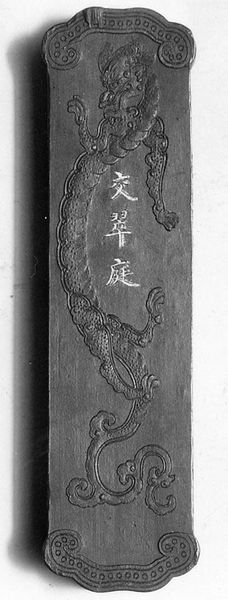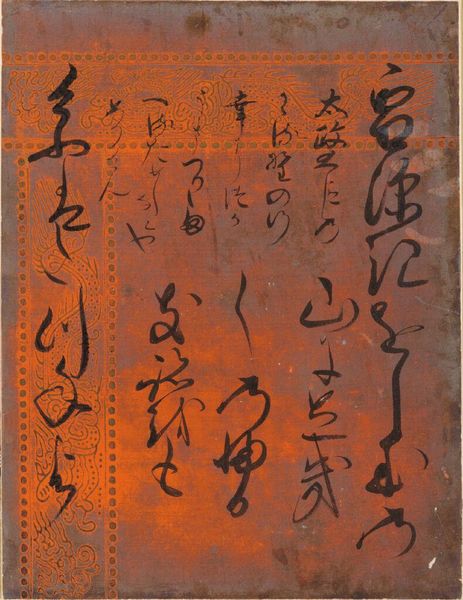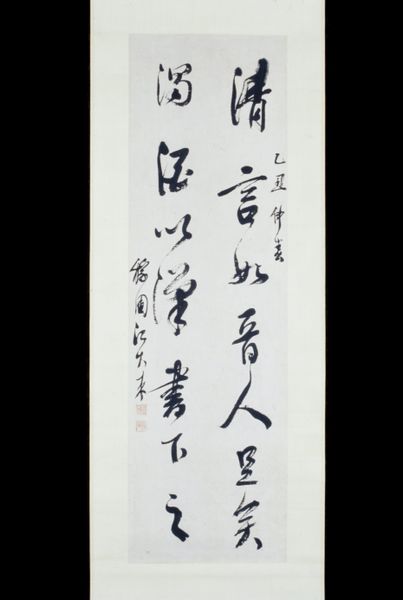
drawing, paper, ink
#
drawing
#
asian-art
#
paper
#
ink
#
china
#
calligraphy
Dimensions: a (sheet, pre-conservation): 13 × 20 1/2 in. (33 × 52 cm) b (sheet, pre-conservation): 12 3/16 × 20 1/2 in. (31 × 52 cm)
Copyright: Public Domain
Curator: Here we have a captivating work: "Letter about a Stomachache (Du tong tie)," dating back to the 19th century. It’s currently housed at the Metropolitan Museum of Art. Editor: My initial response is visceral. The contrast between the structured characters on the dark band and the chaotic cursive script feels like a tangible representation of internal turmoil. Curator: Exactly. Created using ink on paper, this piece is deeply entrenched in Chinese calligraphy. It serves as a vital link to understanding the sociopolitical currents and personal experiences woven through traditional artistic expressions. We can unpack how pain, as a universal experience, intersects with established forms. Editor: I’m struck by the ink's tonality. The way it bleeds into the paper, particularly around the fluid strokes, enhances the work’s expressiveness. It adds an almost unintentional texture that mimics the physical discomfort it portrays. Curator: Calligraphy, especially in its more expressive forms, was often employed by scholars and officials to convey not just words, but also their innermost feelings during often turbulent times. Considering widespread suffering across all socioeconomic statuses throughout this period, we might read it as evidence of how society deals with collective and individual suffering. Editor: The dynamism in the brushstrokes is undeniable. Each character possesses an energy that suggests an artist completely absorbed in the moment of creation. The balance of empty and filled spaces creates a compelling rhythm. Curator: Let’s think about how gender also affected access to resources for medical conditions. If the creator identified as a woman, how could that add additional layers of vulnerability and limited autonomy regarding healthcare. Editor: Thinking formally, it’s like observing the visual equivalent of a complex musical score—the composition's arrangement dictates the viewer’s experience, guiding them through waves of harmony and dissonance. Curator: Precisely, by intertwining art history and intersectional analysis, we appreciate how artwork manifests in its sociohistorical contexts, thus reflecting our history in deeply significant ways. Editor: Yes, appreciating it's formal tension adds a richer understanding.
Comments
No comments
Be the first to comment and join the conversation on the ultimate creative platform.
